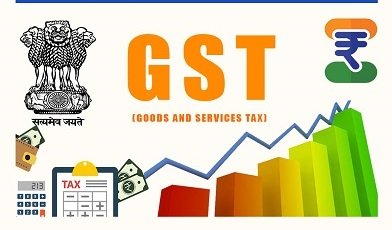Last Updated on August 24, 2025 7:55 am by BIZNAMA NEWS
Govt Plans Major GST Overhaul to Boost Consumption Ahead of Festive Season
R SURYAMURTHY /New Delhi
The government is preparing to push through a sweeping reform of the Goods and Services Tax (GST) structure, aiming to simplify the rate system, ease compliance for businesses, and spur consumer spending in the run-up to the festive season.
According to officials, the new framework under discussion would replace the current multi-slab structure with just two core rates – 5% for essentials and 18% as the standard levy. The highest slab of 28% would be scrapped, with most items shifting to the 18% category, while goods taxed at 12% are likely to move to 5%. “Sin goods” such as tobacco would continue to attract a peak rate of 40%. Exempted items and those currently at 0.25% and 3% will remain unchanged.
A two-day meeting of the GST Council, chaired by Finance Minister Nirmala Sitharaman, is scheduled for September 3–4 in New Delhi to finalise the proposals. The overhaul may also see the compensation cess phased out, with certain items absorbed into the new 40% band.
Push for Consumption
“The Centre has proposed to streamline the GST structure to reduce tax incidence and aid demand,” said Madan Sabnavis, Chief Economist, Bank of Baroda. The plan, he noted, is expected to be rolled out before the festive season, providing a lift to the fast-moving consumer goods (FMCG) sector.
Sabnavis added that while the fiscal impact will need careful assessment, a simpler GST regime could lower inflation if everyday goods like toothbrushes, pencils and hair oil become cheaper. “The direct consumption impact may be modest, but households will have more disposable income to spend elsewhere, which should support demand,” he said.
Industry Priorities
Industry bodies are already flagging sector-specific demands. The Confederation of All India Traders (CAIT) welcomed the reform as a “consumer bonanza” but pressed for carbonated beverages to be taxed at 18%, arguing that soft drinks account for nearly 30% of sales in kirana stores.
The Hotel Association of India (HAI) warned that the current 18% tax on hotel tariffs undermines India’s global competitiveness in tourism. It urged raising the threshold for the 12% GST bracket on hotel rooms from ₹7,500 to ₹15,000 to reflect inflation, and called for a uniform 5% rate with input credit across hospitality services. “The 18% rate is prohibitive and risks hurting India’s tourism ambitions,” said HAI President Kachru.
Meanwhile, the Indian Vegetable Oil Producers’ Association (IVPA) highlighted challenges from the inverted duty structure. Since refund restrictions on input tax credit (ITC) were imposed in 2022, working capital pressures have intensified, especially for MSMEs. “Blocking refunds not only strains viability but also pushes consumer prices higher, encouraging unsafe and adulterated oils,” IVPA warned.
Balancing Revenues and Relief
Economists caution that revenue neutrality will be the biggest challenge. Currently, two-thirds of GST revenues come from the 18% slab, while about 10–11% is derived from the 28% bracket. Moving these items down to 18% may reduce collections, although some of the gap could be offset if higher rates on sin goods are enforced.
“Any restructuring must balance consumer relief with fiscal prudence,” said Sabnavis. “If the budget takes a hit initially, faster growth in demand and economic activity can make up for it.”
For now, businesses and consumers alike will be watching the September GST Council meeting closely. If cleared, the reform could mark the most significant reset of India’s indirect tax system since GST’s launch in 2017.


